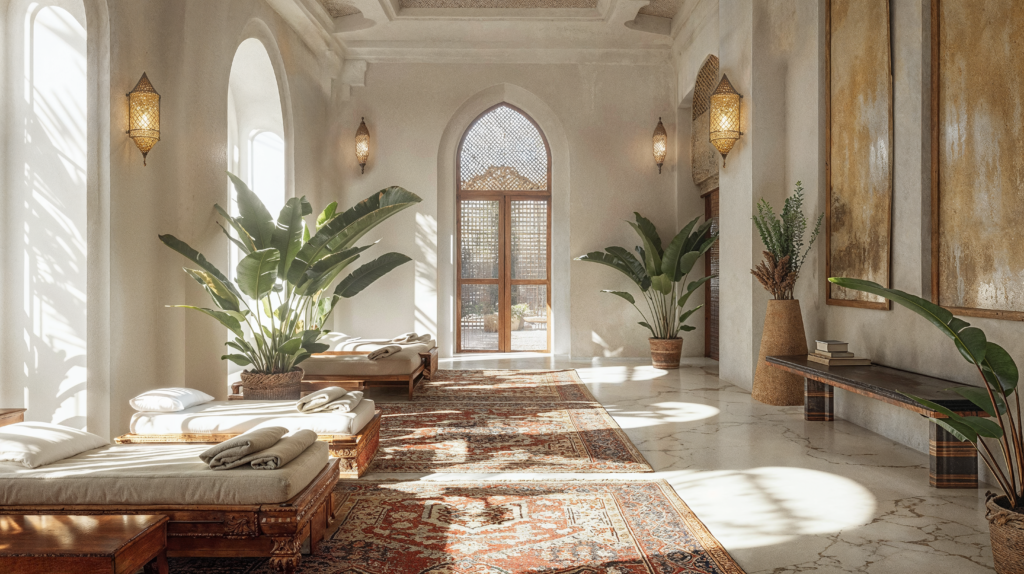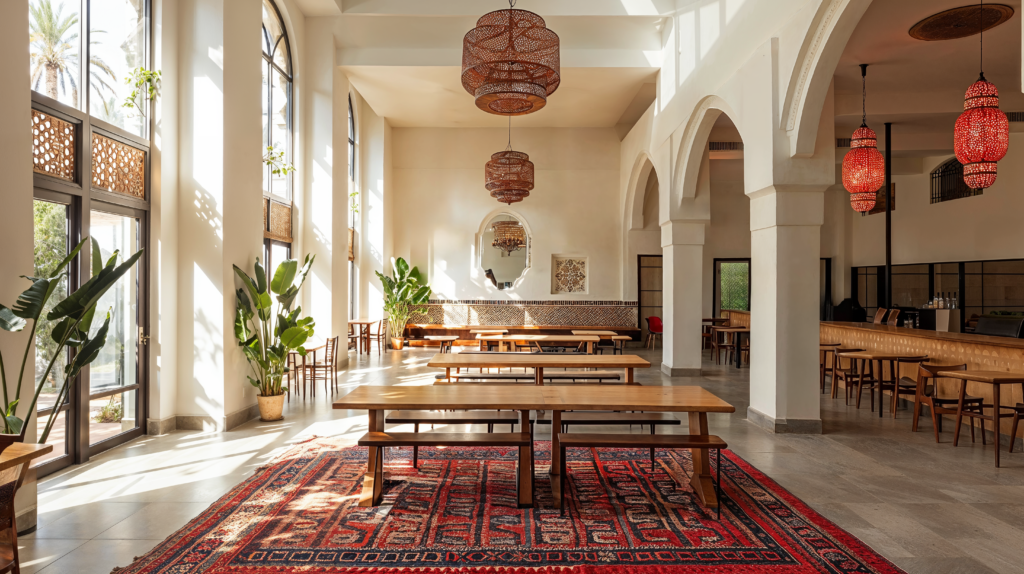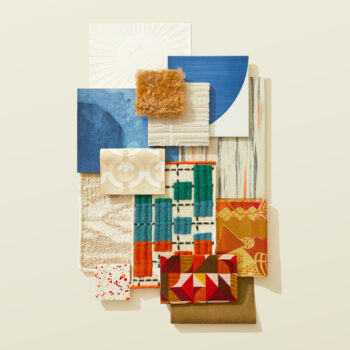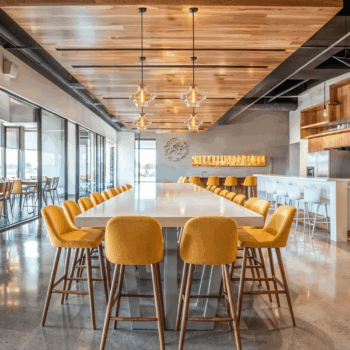
Moroccan design, influenced by Berber, Arab, and Islamic cultures, is celebrated for its captivating blend of tradition and artistry. This design style is a testament to exceptional craftsmanship, featuring ornate details and bold aesthetics that remain relevant across centuries. By incorporating rich textures, vibrant colors, and intricate patterns, Moroccan design creates spaces that feel both timeless and contemporary.
Key Elements of Moroccan Design
- Archways
Iconic keyhole or horseshoe-shaped archways evoke a sense of intimacy and grandeur. These architectural features create dramatic focal points in any space, blending structural elegance with cultural depth. - Arabesque Tiles and Geometric Patterns
The intricate zellige tiles and bold geometry of Moroccan design celebrate the region’s artistic and mathematical heritage. These patterns add visual intrigue, whether used on walls, floors, or decorative accents. - Rich Color Palette
Jewel tones like turquoise, ruby, and gold pair harmoniously with earthy hues such as ochre and terracotta. These combinations create vibrant yet grounded environments that feel luxurious and approachable. - Natural Materials
Warm, artisanal elements like carved wood, terracotta, woven textiles, and brass fixtures lend authenticity and texture to Moroccan-inspired spaces. - Perforated Lighting
Intricately designed lanterns cast mesmerizing shadows, adding depth and an ethereal quality to interiors.
Bringing Moroccan Design Into Modern Spaces
The adaptability of Moroccan design makes it ideal for a wide range of modern environments, from residential interiors to commercial spaces. Here are some examples of how this timeless style can be incorporated:
Healthcare
Soothing colors, natural materials, and soft lighting create comforting atmospheres for recovery rooms. Geometric patterns on walls or textiles add visual interest and foster a calming environment.

Workplaces
Moroccan-inspired geometric screens, jewel-toned accent walls, and ornamental lighting bring elegance and cultural depth to conference rooms, inspiring creativity and focus.

Hospitality
Restaurants and tea rooms come alive with vibrant tiles, plush textiles, and carved wooden screens, establishing a warm, inviting ambiance.

Education
In school cafeterias, off-white shades play a crucial role in creating a neutral and warm backdrop to highlight the vibrant patterns, textures, and bold colors typical of the style.

Residential Homes
Moroccan design can transform homes through layered textiles, low-slung seating, and arched doorways. Kitchens and bathrooms especially shine with brass fixtures and colorful tiles.

Transportation
Geometric motifs on upholstery or wall accents lend a sense of artistry, while textiles in neutral tones like beige, cream, and brown create a harmonious and understated elegance. These elements transform boat interiors into refined, culturally rich spaces that balance functionality with aesthetic appeal.

Mixed-Use Buildings
Common areas in mixed-use spaces can feature bold Moroccan tiling, archways, and ornamental lighting, creating memorable experiences that bridge tradition and modernity.

The Lasting Impact of Moroccan Design
Moroccan design’s ornate yet functional qualities make it a versatile influence in contemporary spaces. Its seamless blend of traditional craftsmanship with modern sensibilities enriches any environment, adding cultural depth and artistic beauty. By integrating Moroccan elements, designers can create impactful spaces that stand out for their uniqueness and timeless elegance.
Whether in homes, workplaces, or hospitality settings, Moroccan design continues to inspire, offering an enduring connection to history while meeting the demands of modern living.
Looking for more Moroccan design inspiration? Read our article on Incorporating Arabesque Designs for Modern Interiors.







